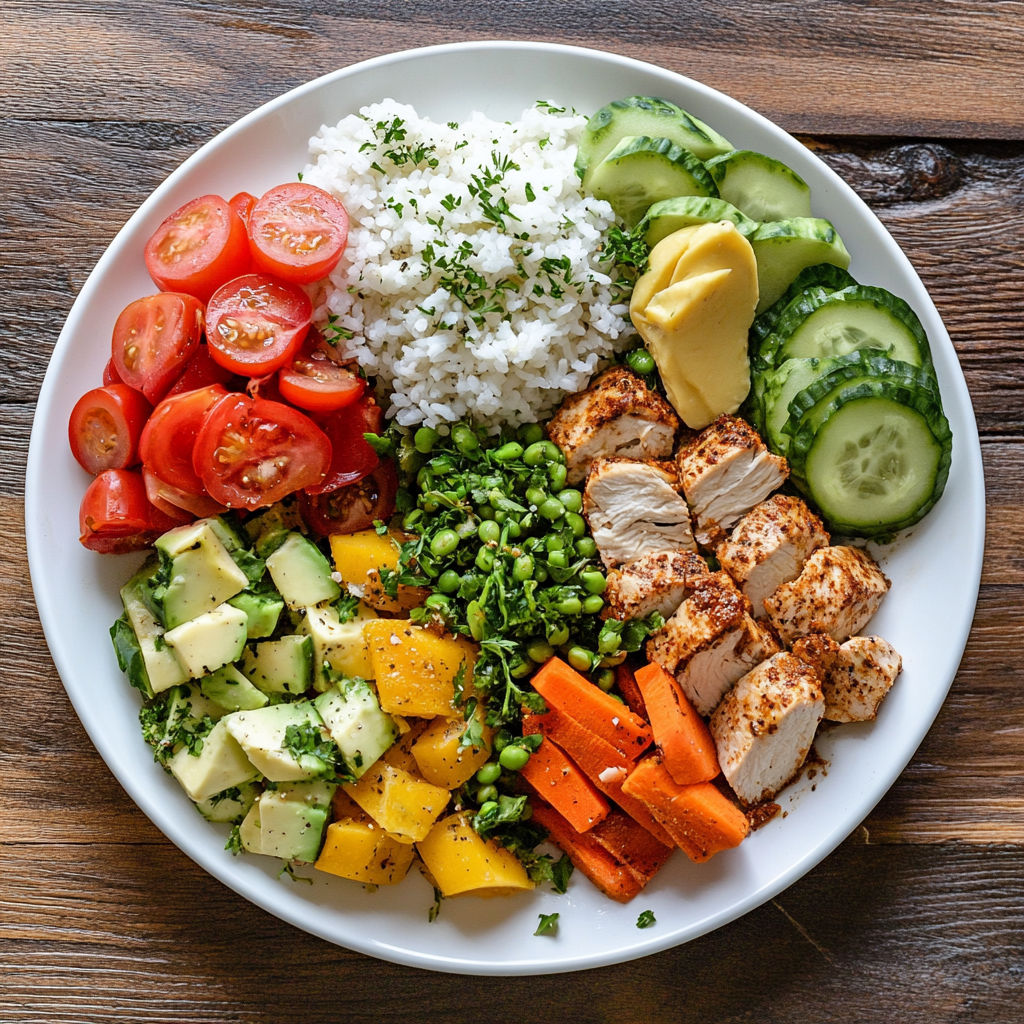A balanced meal plan is the foundation of good health. It ensures that your body gets the essential nutrients it needs to function optimally. With the right balance of macronutrients (carbohydrates, proteins, and fats) and micronutrients (vitamins and minerals), you can maintain energy levels, support your immune system, and reduce the risk of chronic diseases. This guide will walk you through the basics of creating a balanced meal plan that is easy to follow and sustainable over the long term.
Why a Balanced Meal Plan Matters
Before diving into the specifics, it's essential to understand why a balanced meal plan is crucial. A diet that lacks balance can lead to nutrient deficiencies, energy imbalances, and long-term health issues. For example, too many processed foods high in sugar and unhealthy fats can increase the risk of obesity, diabetes, and heart disease. On the other hand, not consuming enough of certain nutrients can weaken your immune system and reduce your body’s ability to repair itself.
A balanced meal plan helps:
- Maintain Energy Levels: Carbohydrates are the body's primary energy source, while proteins and fats also play a vital role in sustaining energy throughout the day.
- Support Muscle Growth and Repair: Protein is essential for muscle repair and growth, especially if you are active or looking to build muscle mass.
- Boost Immune Function: Vitamins and minerals, such as vitamin C, zinc, and iron, are crucial for a strong immune system.
- Promote Healthy Digestion: A diet rich in fiber from fruits, vegetables, and whole grains supports digestive health and prevents constipation.
- Control Weight: A balanced diet can help manage weight by preventing overeating and ensuring that you feel full and satisfied after meals.
Step 1: Assess Your Nutritional Needs
The first step in creating a balanced meal plan is to understand your nutritional needs. These needs can vary based on age, gender, activity level, and health goals. For example, someone who is highly active may require more calories and protein than someone who is sedentary.
Here are some general guidelines:
- Calories: The average adult needs around 2,000-2,500 calories per day. However, this can vary based on factors like age, gender, and activity level.
- Macronutrients: A balanced diet typically includes 45-65% carbohydrates, 10-35% protein, and 20-35% fat.
- Micronutrients: Vitamins and minerals are essential for overall health. Ensure your diet includes a variety of foods to meet your micronutrient needs.
Step 2: Plan Your Meals Around Whole Foods
Whole foods should be the cornerstone of your meal plan. These foods are minimally processed and packed with nutrients. Examples include fruits, vegetables, whole grains, lean proteins, and healthy fats.
- Fruits and Vegetables: Aim to fill half your plate with fruits and vegetables. They are rich in vitamins, minerals, and antioxidants that support overall health.
- Whole Grains: Choose whole grains like brown rice, quinoa, whole wheat bread, and oats. These provide fiber, which aids digestion and helps keep you full.
- Lean Proteins: Include a variety of protein sources, such as chicken, fish, beans, lentils, tofu, and eggs. Protein is crucial for muscle repair and growth.
- Healthy Fats: Incorporate sources of healthy fats, like avocados, nuts, seeds, and olive oil. These fats support brain health and help absorb fat-soluble vitamins.
Step 3: Balance Your Plate
To ensure your meals are balanced, use the "plate method." This method divides your plate into sections to help you visualize the right proportions of each food group.
- Half of Your Plate: Fill half of your plate with fruits and vegetables. Aim for a variety of colors to get a range of nutrients.
- One-Quarter of Your Plate: Fill one-quarter with lean protein sources like chicken, fish, beans, or tofu.
- One-Quarter of Your Plate: Fill the remaining quarter with whole grains or starchy vegetables like potatoes or sweet potatoes.
Step 4: Include Snacks Wisely
Snacking can be a part of a balanced meal plan if done wisely. Choose snacks that provide nutrients rather than empty calories. Good options include:
- Fresh Fruit: Apples, bananas, and berries are easy and nutritious snacks.
- Nuts and Seeds: Almonds, walnuts, and sunflower seeds provide healthy fats and protein.
- Yogurt: Choose plain yogurt and add your own fruit or a drizzle of honey for sweetness.
- Vegetable Sticks: Carrot, cucumber, and bell pepper sticks with hummus make for a crunchy, satisfying snack.
Step 5: Stay Hydrated
Don’t forget about hydration. Water is essential for digestion, circulation, and temperature regulation. Aim for at least 8 glasses of water a day, more if you are active or live in a hot climate. Herbal teas and water-rich foods like cucumbers and watermelon can also contribute to your daily hydration needs.
Step 6: Monitor Portions and Listen to Your Body
Portion control is an essential aspect of maintaining a balanced diet. Even healthy foods can contribute to weight gain if consumed in large quantities. Pay attention to portion sizes and listen to your body’s hunger and fullness cues.
- Use Smaller Plates: This can help control portions and prevent overeating.
- Avoid Distractions: Eat mindfully without distractions like TV or smartphones. This helps you enjoy your food and recognize when you are full.
- Chew Slowly: Taking your time to chew can improve digestion and help you feel satisfied with less food.
Step 7: Plan for Treats and Indulgences
A balanced meal plan doesn’t mean you have to give up your favorite treats. The key is moderation. Enjoying a small dessert or a piece of chocolate now and then can be part of a healthy diet.
- Plan Ahead: If you know you’ll be having a treat, adjust your meals accordingly.
- Practice Mindful Eating: Enjoy your treats without guilt. Eat them slowly and savor every bite.
Conclusion
Creating a balanced meal plan is about finding the right mix of foods that provide the nutrients your body needs. By focusing on whole foods, balancing your plate, and listening to your body, you can develop a sustainable eating pattern that supports your overall health and well-being. Remember, a balanced diet is not about perfection; it's about making better choices most of the time and enjoying your food in a way that nourishes both your body and mind.

